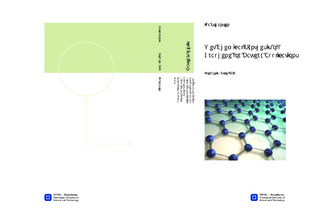| dc.description.abstract | In this thesis, an improved Hummers method is used to produce graphene oxide, while thermal treatment has been used as the reduction process to form reduced graphene oxide. This modified version of Hummers method differs from the original one by the exclusion of NaNO3. This modification eliminates the evolution of NO2/N2O4 toxic gasses.Several syntheses are done, where parameters such as particle size and oxidation time are varied. In addition, the thermal reduction process has also been investigated, and different final temperatures, heating rates and atmospheres are carried out in order to find the best procedure. Finally, the dispersibility was tested for graphite, graphene oxide and reduced graphene oxide, as solubility is an essential property when considering the use of graphene in battery applications. All samples, including graphite, graphene oxide and reduced graphene oxide have also been characterized using X-ray diffraction (XRD), Fourier Transform Infrared Spectroscopy (FTIR) and Scanning Electron Microscopy (SEM). From the XRD results it is found that both the particle size and oxidation time are crucial in order to produce fully oxidized graphite. This was only obtained by using graphite powder smaller than 50 µm and an oxidation time of 5 days. Furthermore, the thermal reduction is also a critical step in the approach to successfully reduce graphene oxide, and it is found that the heating rate has to be 5 °C/s up to at least 900 °C in Ar/H2 (5% H2) gas, and the sample needs to be held at this temperature for 30 minutes. Too slow heating will not create enough pressure inside the sample, which is necessary to overcome the van der Waals forces between the graphene layers. The FTIR results showed that the oxygen containing functional groups attached to the graphene sheets were ketones, epoxy groups, carboxylic acids and hydroxyls. These groups make the graphene oxide soluble. However, these groups are removed during reduction, and hence the reduced graphene oxide becomes insoluble.This work clearly show that the various parameters are very important to control in order to obtain the desired product and that the end result is highly affected by the synthesis route. | nb_NO |

